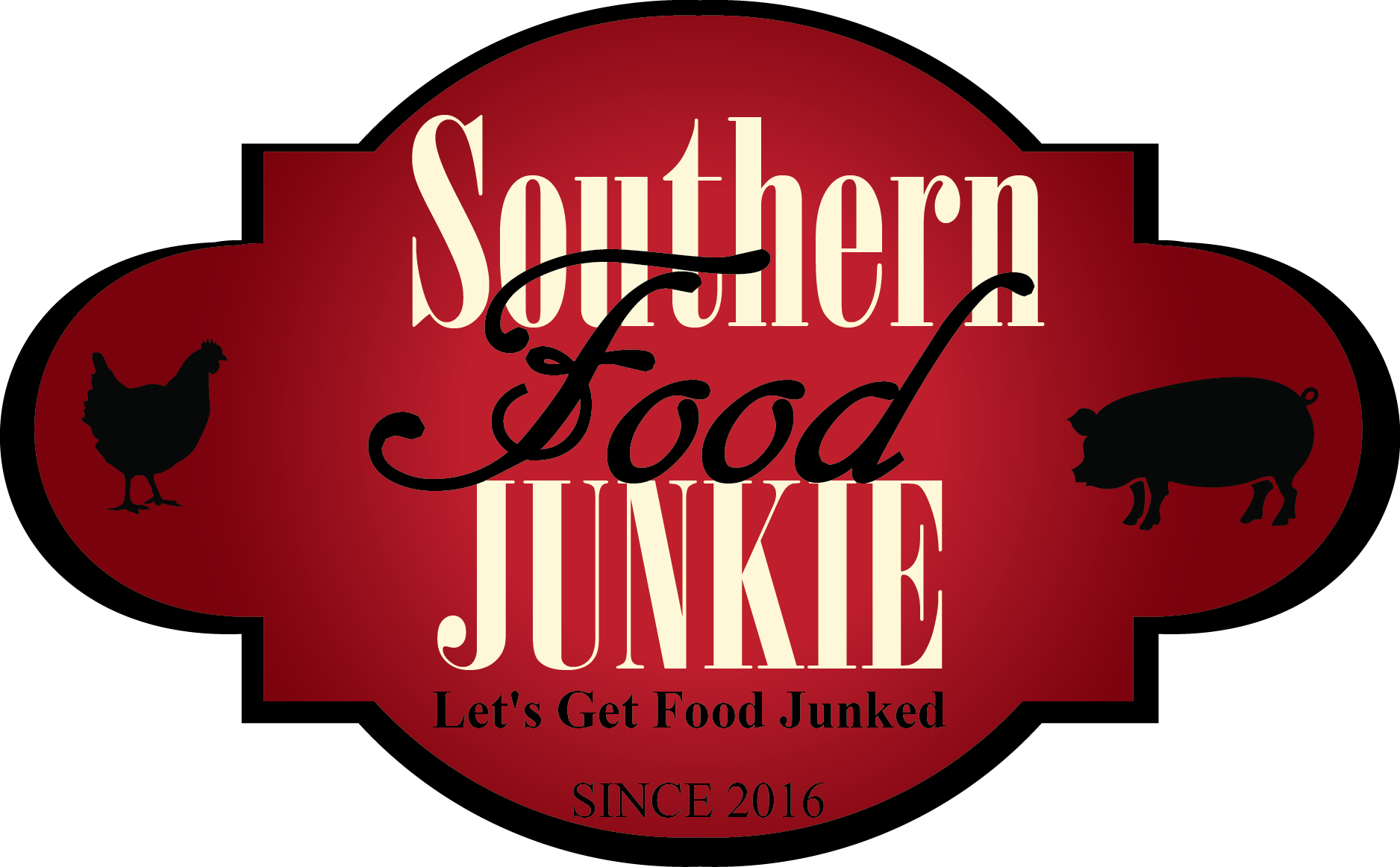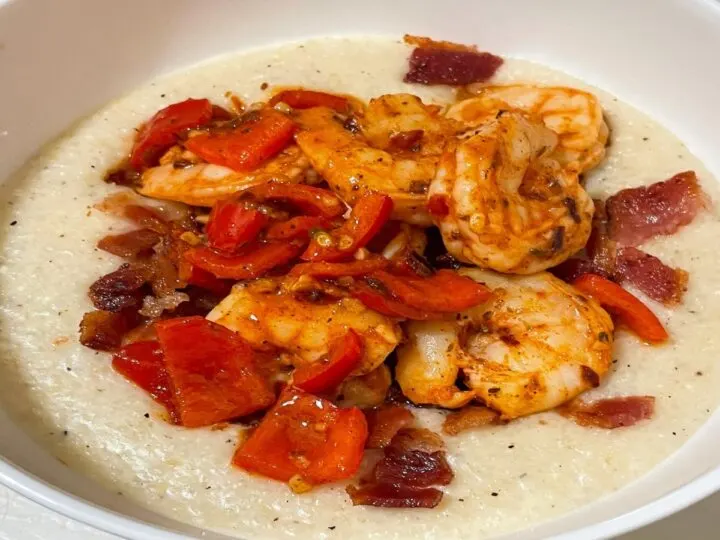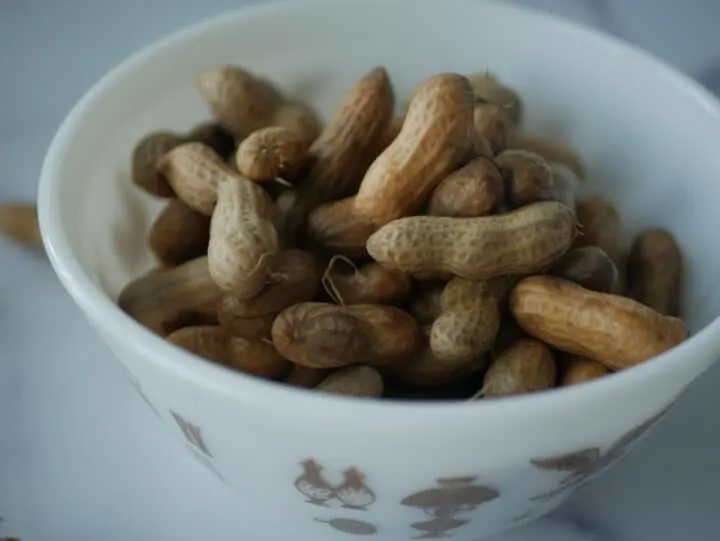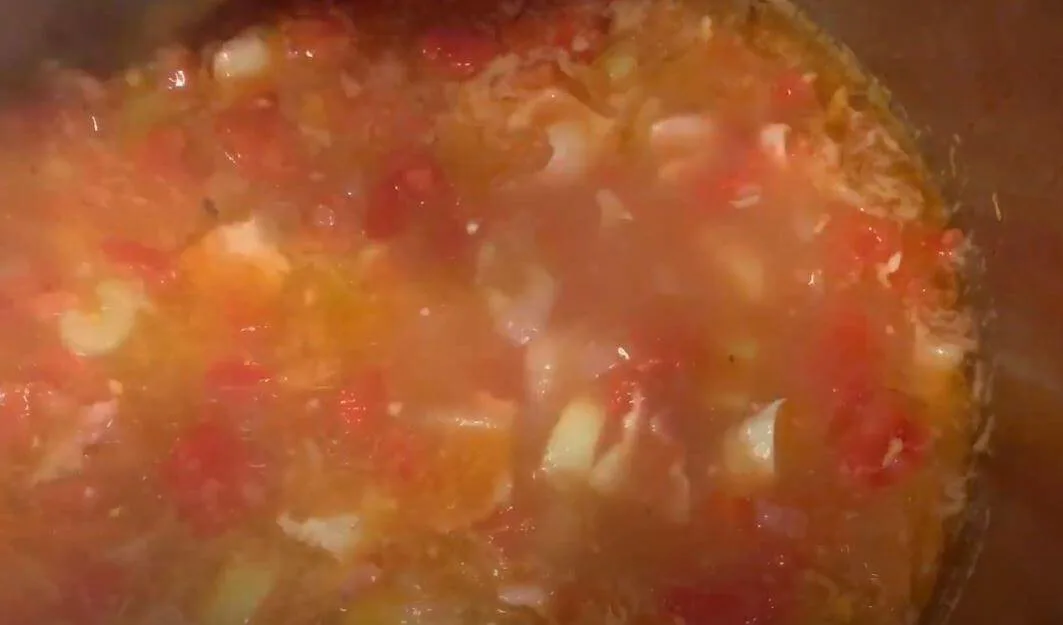South Carolina is a state steeped in rich history and diverse cultural influences. It boasts a culinary landscape that reflects its unique heritage. From the Lowcountry to the Upstate. South Carolina is celebrated for its traditional foods that have stood the test of time in the American South.

This journey through the Palmetto State unveils a tapestry of flavors, where Southern comfort meets coastal sophistication. From iconic dishes rooted in Gullah traditions to barbecue that sparks friendly rivalries. South Carolina’s culinary offerings showcase the state’s commitment to preserving its culinary heritage while embracing the modern twists that make its food scene truly one-of-a-kind.
Join us as we explore the 15 traditional South Carolina foods that define the culinary identity of South Carolina.
Importance of Traditional South Carolina Food
Traditional foods play a vital role in shaping the cultural identity of South Carolina. This is a testament to the state’s rich history and diverse influences. These culinary traditions are deeply rooted in the cultural tapestry, reflecting the agricultural practices, historical connections, and local ingredients. The fusion of various ethnicities that have contributed to South Carolina’s unique food landscape.
Beyond mere sustenance, Southern food dishes like Shrimp and Grits, She-crab Soup, and Hoppin’ John embody the soul of the state. This connects generations through shared flavors and familial rituals.
As South Carolinians gather around tables laden with the aromas of Lowcountry cuisine, they not only indulge in delicious bites but also engage in a social gathering of heritage. This preserving and passing down the recipes is what defines the essence of South Carolina culture.
1. Chicken Bog
Growing up in South Carolina, you learn about a lot of rice dishes. This particular one is a local favorite for most South Carolinians and a family favorite of ours.
What Is Chicken Bog
Chicken Bog is a really simple dish but has lots of flavors. It combines chicken, smoked sausage, and white rice. That is pretty much the base for it. From there you can change it up however you see fit.
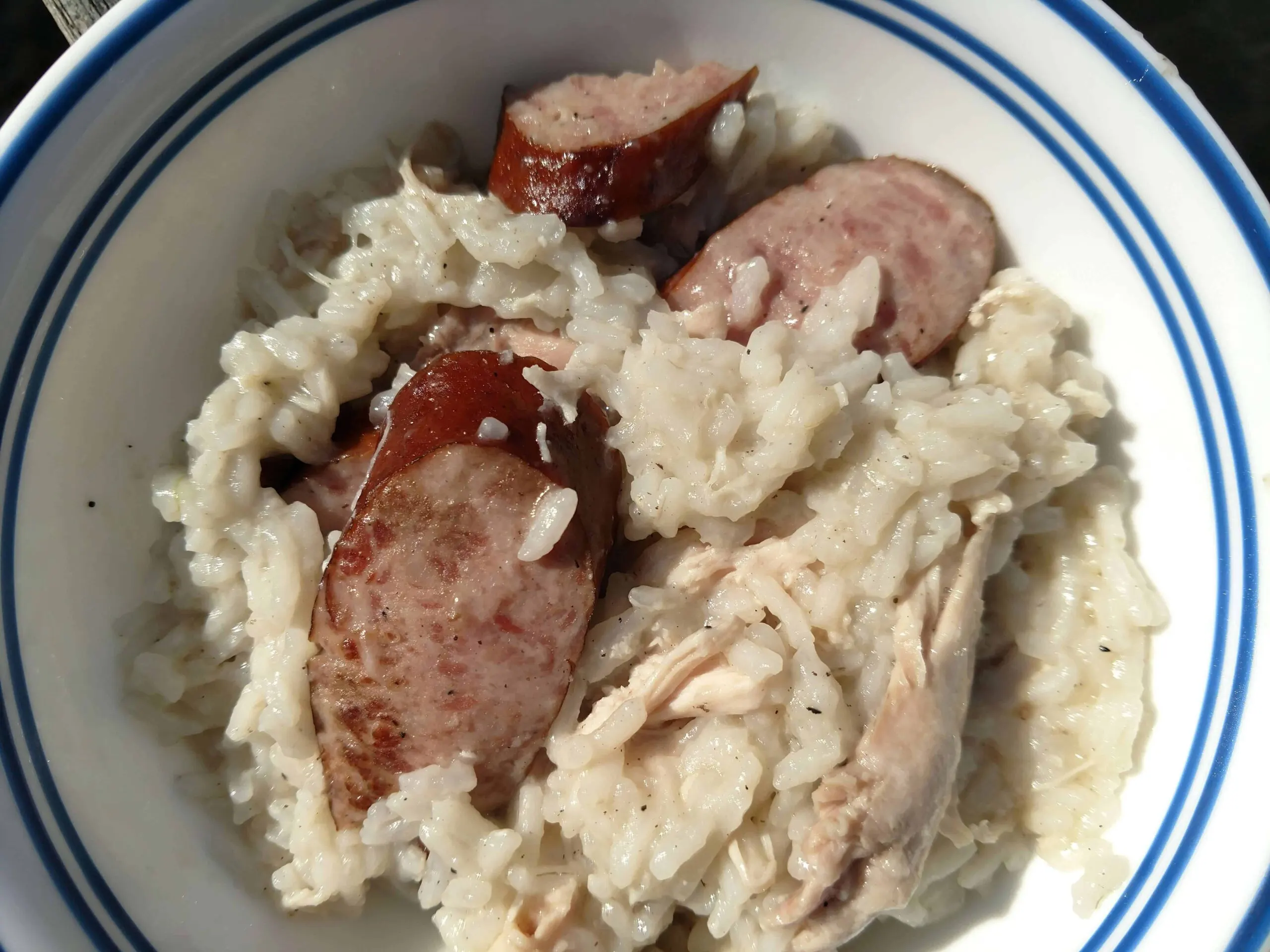
Chicken bog gets its name from the boggy texture of the dish. This dish is a chicken and rice dish with smoked sausage added in, but the rice is starchy in the way it is cooked.
As with any regional dish, Chicken bog has variations and different names. Some parts of the state call this dish Chicken Perlo or chicken pilau. Some cook it in different ways with different ingredients.
The history of this dish has its roots in the South Carolina Low Country, where most of the rice dishes of the state originated. Some even say that the name comes from the bogs of the low country. That is up for debate though as no one knows the history behind the name. Either way, this is one of my favorite South Carolina Traditional foods.
2. Shrimp & Grits
Shrimp and grits is a traditional South Carolina Food. This delightful combination of tender shrimp and creamy, cheesy, and buttery grits has gained popularity far beyond its regional roots. It is now a beloved favorite across the United States.
The dish typically consists of shrimp served over a bed of creamy, stone-ground grits. The grits are often seasoned and cooked with butter or cheese. This provides a rich and savory base for the succulent shrimp.
The shrimp are typically sautéed with a variety of seasonings, which may include garlic, onions, and spices. This creates a flavorful and aromatic topping for the grits. Additional ingredients such as bacon, sausage, or ham are sometimes included to add depth to the dish.
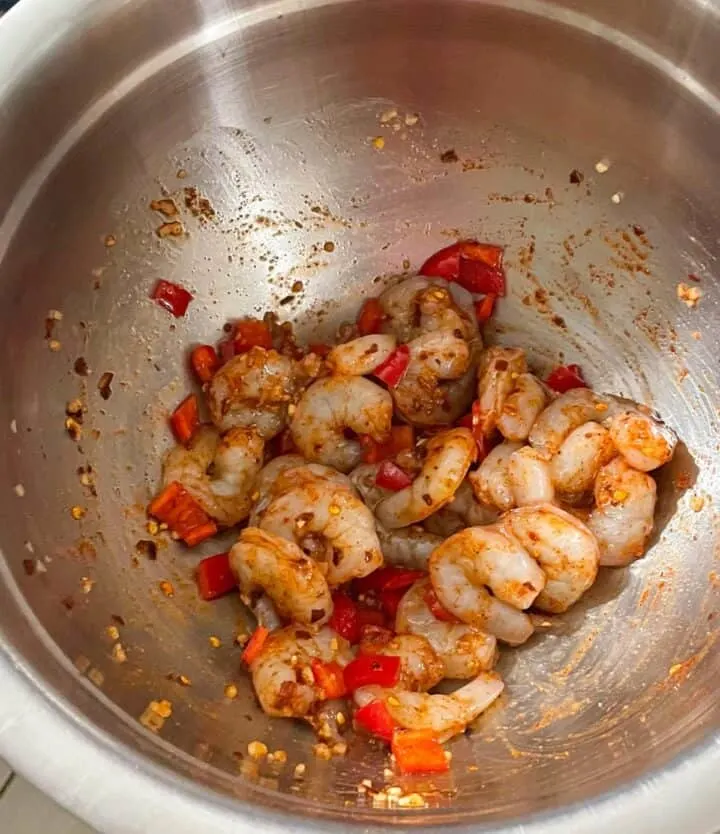
Shrimp and Grits is celebrated for its harmonious blend of textures and flavors, combining the creamy and comforting grits with the savory and slightly sweet taste of the shrimp. It is often served in both casual and upscale dining establishments.
3. Low Country Boil
A low Country boil (also known as Frogmore Stew in South Carolina) is a traditional dish that has been enjoyed by South Carolinians for ages. It combines fresh shrimp, sweet corn, red potatoes, and smoked sausage. Low Country Boil is a perfect all-in-one dish that is sure to be a hit at your next party. This dish is a Traditional South Carolina food that is a classic Southern recipe that you are sure to enjoy!
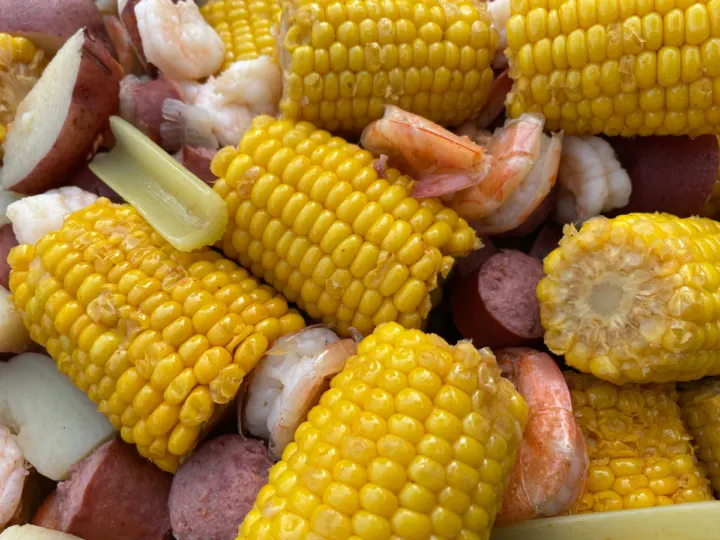
Old Bay Seasoning is used to season the dish. Some folks also add blue crab to their dish. You can add or take away what you like and still have an awesome meal.
Low Country Boil goes by a few other names such as Shrimp Boil, Beaufort Boil, Beaufort Stew, Charleston Stew, Seafood Boil, and even Frogmore Stew.
History of Low Country Boil
A low Country boil is said to have originated in Frogmore, South Carolina. Frogmore is a small town that is located on the South Carolina coast in a tiny town called St. Helena Island in Beaufort County. Equally important, this area is home to the Gullah Culture which was part of the first slaves sent here to the US from West Africa.
This sad part of US history is where many of the Southern dishes that we know and love today came from.
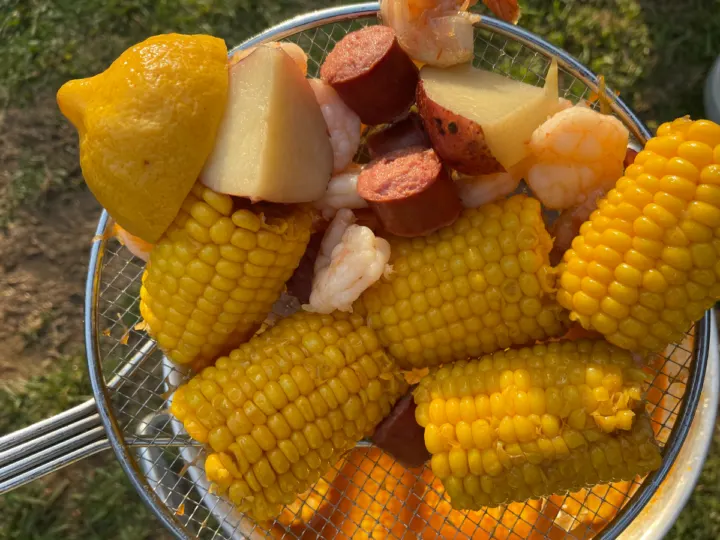
A Lowcountry Boil is meant to be enjoyed as a gathering meal. Parties, family reunions, weddings, family gatherings, and other such events serve a Low Country Boil. This is because it feeds a large crowd and is an epic one-pot meal.
Once cooked, the stew is drained and then poured out on a long table. Sometimes the table is covered in brown paper, aluminum foil, and even newspaper.
4. Hoppin’ John
Hoppin’ John, born in the vibrant Gullah community of South Carolina’s Lowcountry, harmoniously blends black-eyed peas, rice, and a pork element, with seasoning options tailored to personal preferences. This rendition features a delightful medley of onions, bell peppers, garlic, bacon, salt, and pepper.
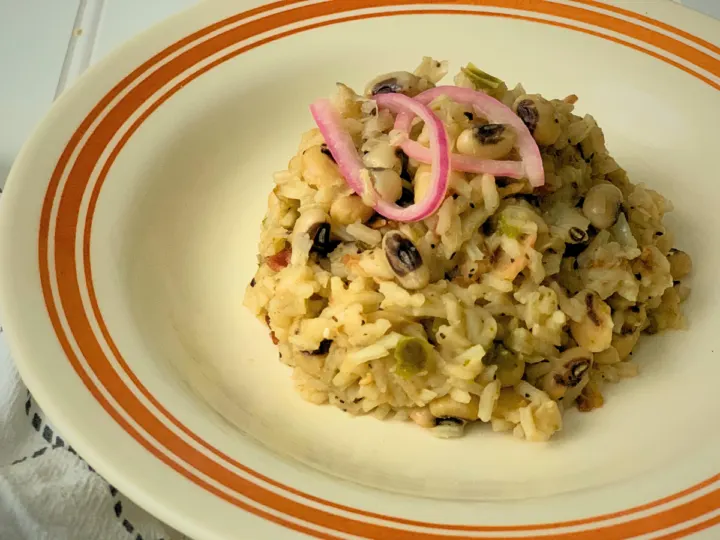
For an extra burst of flavor and color, some aficionados opt to incorporate a hint of tomato paste. If you fancy, consider enhancing the aromatic profile with thyme and a bay leaf. Give my take on Hoppin’ John a whirl, and I trust you’ll relish this hearty, Southern classic.
5. Boiled Peanuts
Boiled peanuts are a super popular snack that is enjoyed by many Southerners. You can usually find them at roadside stands, many convenience stores or gas stations, or even the local grocery store. As with many of the traditions and foods that are popular in the South, peanuts were first brought here with the slave trades from Africa to the United States.
Boiled Peanuts are thought to have originated to be an original South Carolina food, where is it listed as the South Carolina State snack food. They also were called Goober peas as a nickname.
The first ever recipe for boiled peanuts was published in 1899 and was by a South Carolina lady by the name of Almeda Lambert (National Peanut Board, 2022).
A Fall time snack
Boiled peanuts are enjoyed year-round, but their popularity increases as summer fades into fall. As the South turns its eyes to football season, this snack raises its salty head on each game day. They are a true Southern delicacy.
They can be enjoyed with just plain salt or you can add seasonings to them as well. One popular way to season them is with Cajun seasoning or creole seasoning. Some people will add in a little vinegar as well.
One of my favorite ways I have ever had them was boiled with ham hocks and vinegar. That was superb! Feel free to add in your favorite seasonings.
6. Catfish Stew
Considered by many as a South Carolina Traditional dish, Catfish stew combines tomatoes, bacon, potatoes, and Catfish filets to make a hearty and filling stew. Catfish stew was a staple along the banks of many fish camps back in the early days.
Catfish stew may go by a few different names such as South Carolina Catfish Stew, Charleston Catfish Stew, Lowcountry Catfish Stew, and Carolina Catfish Stew. So if you are looking the name up, just know it goes by different names sometimes.
Once cooked, the catfish breaks apart during the cooking process. You don’t see much of it once it has cooked down to the consistency that I prefer. This is what makes a great southern catfish stew that is sure to please your taste buds!
In the southern lakes, the plentiful catfish, a true delicacy in the region, take center stage. While many may associate catfish with the classic Southern style of being fried to golden brown perfection, there’s more than one way to savor these delectable creatures. Enter Catfish Stew, an alternative that, once experienced, is bound to win your taste buds over.
7. Hush Puppies
The history of the hush puppy is deeply rooted in Southern culinary traditions, with its origins traced back to the United States, particularly South Carolina. The exact origin story is a bit elusive, but a few popular theories exist.
One of the many theories places the invention of the Hush Puppy on the banks of the Edisto River right here in South Carolina. According to Robertfmoss.com, Hush Puppies were originally called Red Horse bread.
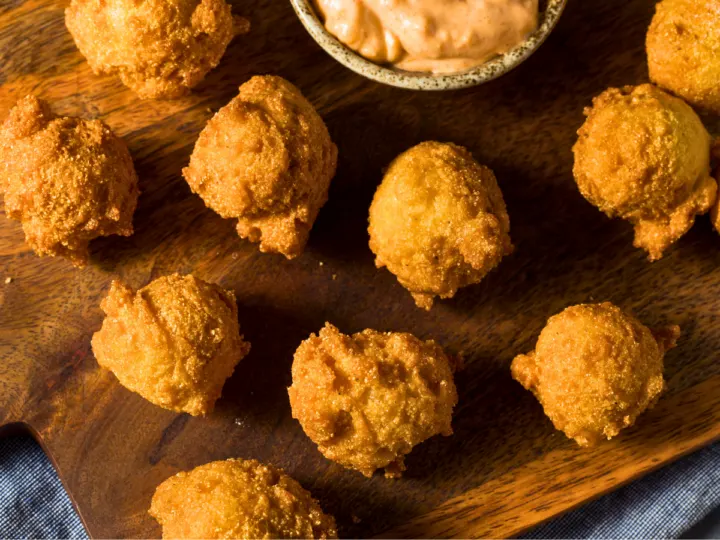
It was common for camps to be set up in the South on the banks of the river. Here men would fish, then cook the fish. Their families would come to eat at the camp. This is where the term “Fish camps” came from as you will see on many fried fish eateries throughout the South.
The name of the hush puppy which was originally called Red Horse bread was called this because it was served alongside a popular species of fish at the time called a Red Horse.
Romeo Govan was an African American man who was known for his fish fries and this was a side that he served along with the fish. Red Horse Bread was the name he gave it. He simply called it Red horse bread because he served it with red horse fish.
8. Barbecue
Few foods in the United States spark as much debate as BBQ. Across the South, each state boasts its distinct BBQ style and sauce, creating a flavorful tapestry of regional traditions.
Some states such as South Carolina and North Carolina are even divided on chopped barbecue versus pulled barbecue and sauce style as well. Every proclaiming the finest BBQ highlights the subjectivity of food. Like beauty in the eye of the beholder, what’s delicious depends on the taste buds of the one savoring it.

What Does South Carolina Mean by Barbecue
There is research that shows that South Carolina was the first state to barbecue. This makes SC the birthplace of Barbecue. According to Destination-bbq, what makes BBQ is the method by which it is cooked, low and slow, and the marinade of smoke. If you have no smoke, you have no BBQ.
I should interject here that what Southerns and Northerns call BBQ is different. One uses it as a noun, and the other as a verb.

Here is what I mean. In the North, BBQ refers to an event or social gathering. Here In the South, especially South Carolina, when we say BBQ we are specifically speaking about smoking Pork low and slow.
In short, pigs were brought to the coastal regions of South Carolina by Spanish invaders. Native Americans were already cooking food low, slow, and over a bed of coals. Again, According to Destinations-bbq, “With many of the other origin myths dispelled and a clear case drawn for the marriage of the Native American cooking technique and the Spanish introduction of the pig, it is fairly certain that the first real barbeque took place here in South Carolina.”
9. Benne Wafer
Benne wafers have a history deeply rooted in the Lowcountry of South Carolina. With origins tracing back to the Gullah-Geechee culture. “Benne” is a West African word for sesame, and it reflects the primary ingredient in these thin, crispy cookies. Enslaved West Africans brought the tradition of using sesame seeds to the southern United States, and over time, benne wafers emerged as a distinctive culinary creation.

The cookies gained popularity in Charleston, South Carolina, where African culinary influences melded with European baking techniques. The wafers became a cherished part of the local food culture, often prepared for celebrations and special occasions. Benne wafers are known for their sweet, nutty flavor and delicate texture.
In Charleston, there’s a company, Olde Colony Bakery, still crafting Benne Wafers today. These tasty treats are a local favorite, and you can order them online to savor the Southern goodness.
10. She-Crab Soup
She-crab soup is a quintessential dish hailing from the Lowcountry of South Carolina, celebrated for its rich flavors and coastal charm. The soup’s main star is the blue crab, particularly the female crab known as the “she-crab.”
With its distinctive blend of creamy broth, lump Blue crab meat, and a hint of sherry, she-crab soup offers a delectable experience that captures the essence of Southern hospitality. Originating in Charleston, this soup has become a symbol of the region’s culinary heritage, often served at elegant gatherings and esteemed restaurants.

Whether enjoyed on a chilly evening or as a culinary tribute to the bounties of the Atlantic, she-crab soup stands as a savory testament to the unique and flavorful traditions of South Carolina.
11. Oyster Roast
The history of the oyster roast traces back to coastal communities in the Southern United States, particularly in South Carolina’s Lowcountry. Descendants of West African slaves, the Gullah-Geechee people, played a crucial role in shaping this tradition. Oyster roasts were informal gatherings held outdoors, where oysters were roasted on grills over open flames, creating a unique and flavorful cooking method.
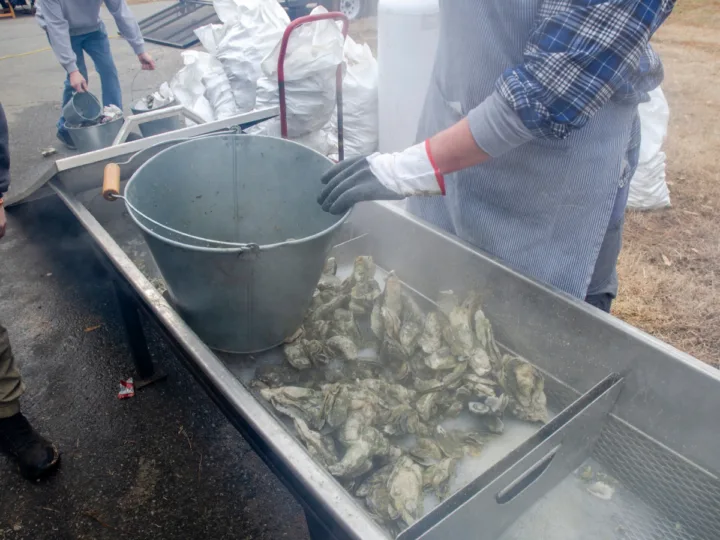
Today, these roasts are communal events, fostering social bonds as participants gather to shuck and savor the briny, succulent oysters. The tradition has become a cherished celebration of local seafood and community in coastal regions throughout the South.
Once the oysters are roasted, they are poured out on a table for people to gather around and shuck while you eat them. The oyster meat is often placed on a saltine cracker and then topped with hot sauce, Cocktail sauce, or Horseradish sauce.

12. Pimento Cheese
Pimento cheese has a flavorful history deeply rooted in the Southern United States, with origins that can be traced back to the early 20th century. The combination of cheese, mayonnaise, and chopped pimentos (sweet red peppers) became a beloved staple in Southern households, often considered a comfort food.
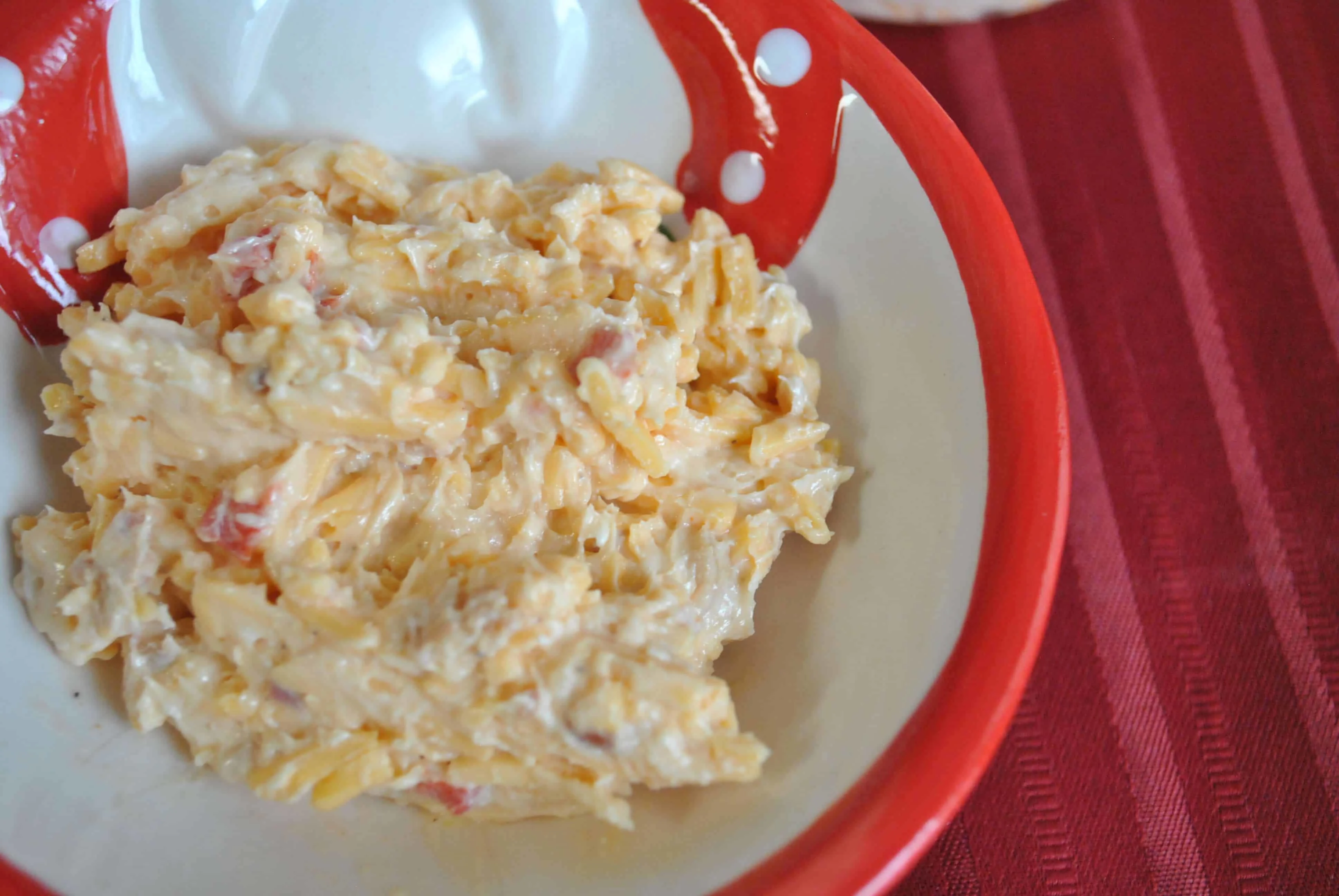
The exact origins of pimento cheese are a bit elusive, but it gained popularity in the early 20th century when mass-produced food products became more widely available. Pimento cheese offered a convenient and affordable way to add flavor and versatility to meals, and it quickly became a regional favorite.
Making Pimento cheese homemade is best, but if you want to try a great commercially made pimento cheese, check out Palmetto Cheese. It is made right here in the Palmetto State.

Pimento cheese became a symbol of Southern hospitality and a popular dish at social gatherings, picnics, and church events. It also found its way into upscale Southern cuisine, with chefs incorporating it into creative recipes. You will even see it in big events such as the Master’s Golf Tournament in April as well.
13. Peach Cobbler
South Carolina has a longstanding and sweet association with peaches, a history that dates back to the late 19th century. The state’s climate, particularly in the upstate regions, proved to be ideal for cultivating this juicy and flavorful fruit.
Although its neighboring state, Georgia, is known as the “Peach State”, SC produces and exports more peaches than Georgia coming in nationally only to California.

History of Peach Cobbler
One of the most iconic peach dishes from the South is the Peach Cobbler. Peach cobbler, a classic Southern dessert, has roots that can be traced back to early American history. The dish evolved as European settlers adapted traditional fruit-based desserts to the ingredients available in the New World.
The word “cobbler” itself is thought to originate from the British term “cobeler,” referring to a person who mends shoes. The name likely stuck because the biscuit or pastry topping resembles a cobbled street.
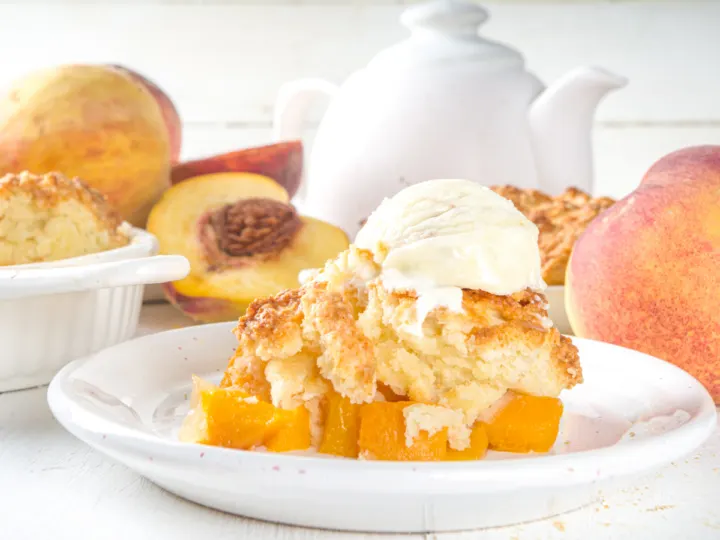
As settlers moved westward in the 19th century, they brought their culinary traditions with them, incorporating locally available fruits into their desserts. Peaches, abundant in the Southern United States, became a popular choice for cobblers.
While peach cobbler is not exclusively from South Carolina, the state, with its favorable climate for peach cultivation, has certainly contributed to the popularity of this classic Southern dessert.
14. Okra Soup
While the history of okra soup specifically in South Carolina might not be extensively documented, the use of okra in Southern cuisine, including the state of South Carolina, has deep historical roots. The presence of okra in Southern cooking can be traced back to the African diaspora and the culinary traditions of enslaved Africans who brought this versatile vegetable to the Southern United States.

In South Carolina, where Gullah-Geechee communities preserved and adapted West African culinary practices, okra became a fundamental ingredient in various dishes, including soups and stews. The Gullah people, who resided in the Lowcountry regions of South Carolina, made significant contributions to the region’s unique cuisine, incorporating ingredients like okra into their recipes.
15. Sweet Tea
Being a native of South Carolina, I have drank Southern Sweet Tea all my life. I cannot remember a time when there was not a pitcher of sweet tea in the refrigerator. It is one of my favorite all-time drinks and that is why I am sharing how to make the perfect southern sweet tea recipe.

Birthplace of Sweet Tea
The birthplace of sweet tea is often attributed to the Southern United States, particularly the region known as the “Lowcountry,” which includes states such as South Carolina and Georgia. While sweetened iced tea likely existed in various forms before the 19th century, the specific term “sweet tea” and its association with the South became prominent in the early 20th century.
South Carolina Had the First Tea Plantations
As stated before, I was born and raised in South Carolina. Some of the very first tea plantations were right here in the Palmetto State. Not only was South Carolina the first place to plant and raise tea, but it is also thought to have been the only state to grow tea commercially.
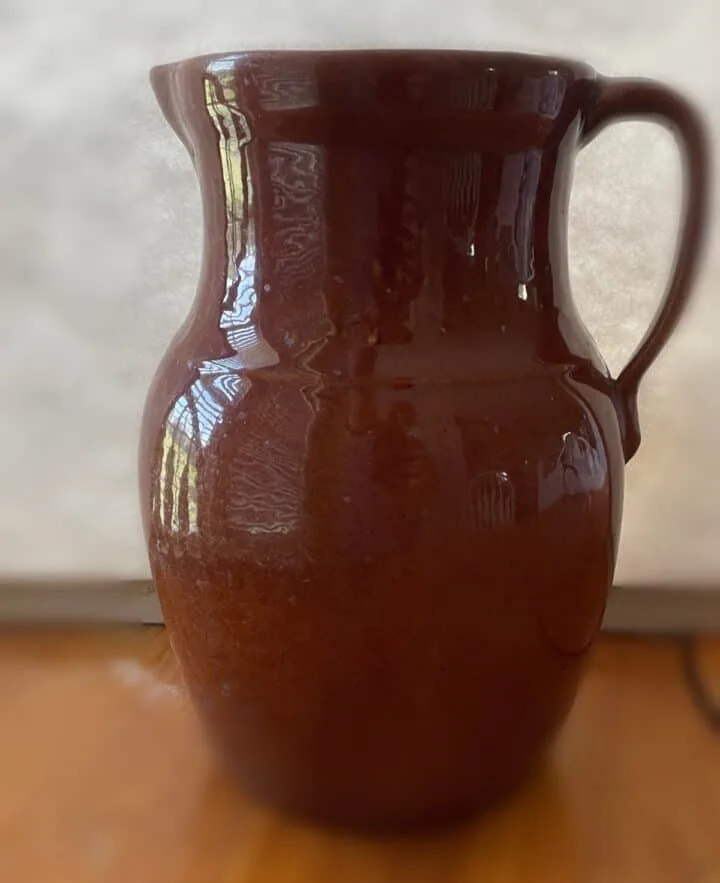
One popular origin story points to the 1904 World’s Fair in St. Louis, where iced tea with added sugar was showcased by tea plantation owner Richard Blechynden from Summerville, South Carolina. Visitors to the fair enjoyed the refreshing beverage and sweet tea gradually gained popularity in the Southern states.

Another tale attributes the creation of sweet tea to the tea plantations in the Lowcountry, where the hot climate inspired the addition of sugar to iced tea to create a more thirst-quenching and enjoyable beverage. Regardless of its exact origin, sweet tea has become an iconic and beloved Southern tradition.
Southern Hospitality
It is often associated with hospitality, warm weather, and the cultural heritage of the American South. Today, sweet tea is a staple in Southern cuisine and is a South Carolina favorite that is enjoyed throughout the United States, with variations in sweetness levels depending on personal preferences.
Conclusion
As we wrap up our culinary tour through the Palmetto State, it’s evident that South Carolina’s traditional foods are not just a feast for the palate but a journey through the state’s vibrant history and diverse cultural influences.
From the Lowcountry’s seafood delights to the barbecue traditions that ignite taste buds, each dish reflects a story woven into the fabric of South Carolina’s rich heritage.
Thanks for stopping by Southern Food Junkie. We hope that you enjoy this recipe and would want to share it with friends, family, and coworkers. Make sure to take time to give thanks to the creator, God, by which all blessings flow.
-Ronnie | Let’s Get Food Junked
John 6:35
